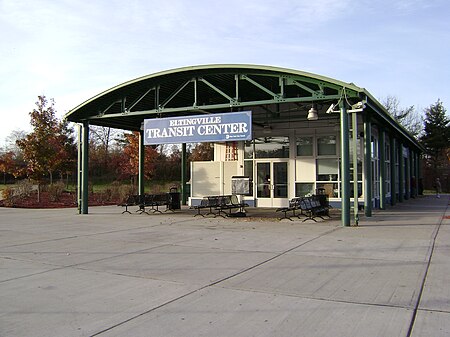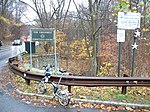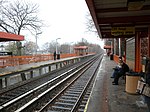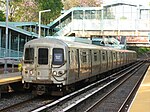Eltingville Transit Center
2004 establishments in New York CityBus stations in New York CityMTA Regional Bus OperationsTransit centers in the United StatesTransportation buildings and structures in Staten Island ... and 1 more
Transportation in Staten Island

Eltingville Transit Center is a park and ride transit center that is located in Eltingville, Staten Island. It is located at the intersection of Arthur Kill Road and Richmond Avenue, at the end of the Korean War Veterans Parkway. The transit center was completed in 2004. Amenities include schedules, maps, free parking, and vending machines for soda, snacks, and MetroCards. The center is halfway between the Eltingville Staten Island Railway station and the Staten Island Mall, another (de jure) transit center, including the adjacent Yukon Depot.
Excerpt from the Wikipedia article Eltingville Transit Center (License: CC BY-SA 3.0, Authors, Images).Eltingville Transit Center
Wainwright Avenue, New York Staten Island
Geographical coordinates (GPS) Address Nearby Places Show on map
Geographical coordinates (GPS)
| Latitude | Longitude |
|---|---|
| N 40.5606 ° | E -74.1712 ° |
Address
Wainwright Avenue
10312 New York, Staten Island
New York, United States
Open on Google Maps








